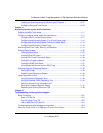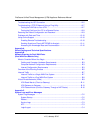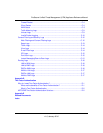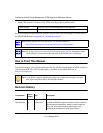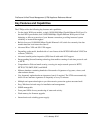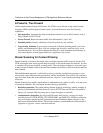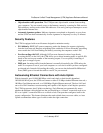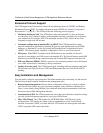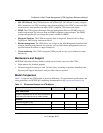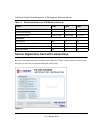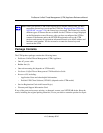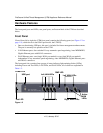
ProSecure Unified Threat Management (UTM) Appliance Reference Manual
Introduction 1-3
v1.0, January 2010
Dual-WAN Port Models for Increased Reliability or
Outbound Load Balancing
The UTM product line offers models with two broadband WAN ports. The second WAN port
allows you to connect a second broadband Internet line that can be configured on a mutually-
exclusive basis to:
• Provide backup and rollover if one line is inoperable, ensuring you are never disconnected.
• Load balance, or use both Internet lines simultaneously for outgoing traffic. A UTM with dual-
WAN ports balances users between the two lines for maximum bandwidth efficiency.
See “Network Planning for Dual WAN Ports (Dual-WAN Port Models Only)” on page B-1 for the
planning factors to consider when implementing the following capabilities with dual WAN port
gateways:
• Single or multiple exposed hosts.
• Virtual private networks.
Advanced VPN Support for Both IPsec and SSL
The UTM supports IPsec and SSL virtual private network (VPN) connections.
• IPsec VPN delivers full network access between a central office and branch offices, or
between a central office and telecommuters. Remote access by telecommuters requires the
installation of VPN client software on the remote computer.
– IPsec VPN with broad protocol support for secure connection to other IPsec gateways and
clients.
– Depending on the model, bundled with a 1-user license of the NETGEAR ProSafe VPN
Client software (VPN01L).
• SSL VPN provides remote access for mobile users to selected corporate resources without
requiring a pre-installed VPN client on their computers.
– Uses the familiar Secure Sockets Layer (SSL) protocol, commonly used for e-commerce
transactions, to provide client-free access with customizable user portals and support for a
wide variety of user repositories.
– Browser based, platform-independent, remote access through a number of popular
browsers, such as Microsoft Internet Explorer, Mozilla Firefox, or Apple Safari.
– Provides granular access to corporate resources based upon user type or group
membership.



